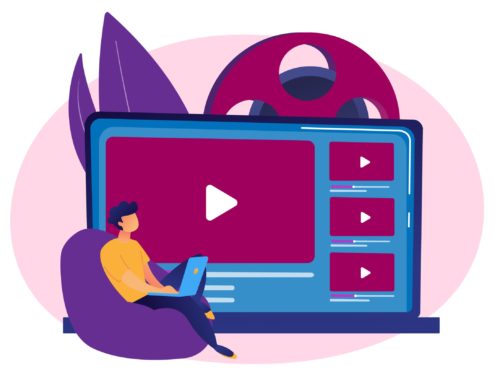Video ads are the latest in a long line of advertising mediums used by Google and Facebook. Remember when Display Ads in the form of images with one or two lines of written content were all the rage? Sure you do, it wasn’t that long ago after all. However, platforms such as YouTube have been making the most out of video ads for a while now and it wouldn’t have been long before Facebook and Google jumped into the fray, and jumped into the fray they did.
One of the main reasons why online advertisers are opting for video ads is that these ads seem to be offering high conversion rates. In other words, these ads are proving to be quite effective in helping companies receive positive engagement from viewers. Taking conversion rates into account here is of the utmost importance simply because video ads can be quite expensive and time-consuming to create.
Think about it: would it take a graphic designer and PPC expert more time to create an image or a minute-long video to promote your product/service? Oh but wait – should your video be one minute long in the first place? Good question. Let’s explore, shall we?
The first thing to consider when deciding on the length of your video ad is whether or not you have enough content to merit a full-fledged video ad. For instance, if you’re advertising a basic product or service that customers require regularly (such as dishwashing liquid or pest control) chances are you won’t require much time to get your point across. Remember the age-old adage: time is money? It could be true in the context of video ads as well.
Look at it this way: if you’re going to spend a good amount of money making a long video ad for an essential product that doesn’t need much introduction, you ideally shouldn’t need more than 10 seconds to make your point. 10 seconds doesn’t sound like much, but when you consider most people using YouTube and other such platforms skip an ad after the 5-second mark, 10 seconds certainly seems like a luxury.
If users are given the option to skip ads after 5 seconds on some platforms and not on others, it can lead to them feeling frustrated with the latter. However, reliable statistics have shown that the length of the ads you choose to display online should vary from platform to platform.
For instance, you may have noticed that ads on Instagram are generally no more than 30 or 60 seconds long. Since many of these ads are created by influencers who speak about a product or service to the audience rather than depend on graphics, this seems to be a reasonable amount of time. This is why some of the ads run for minutes as well, especially if they’re product reviews, and receive a good response from viewers.
On the other hand, ads on Facebook tend to be nearly 90 seconds long. Facebook even gives advertisers the option of running ads that are a few hours long, but this is not a commonly-used feature, and for good reason. Unless they’re webinars advertising courses online, it doesn’t make sense for advertisers to expect audiences to view their ads for hours together.
One thing Facebook and Instagram have in common lately is that advertisers on both platforms seem to be using the live feature to promote their products and services. Since the live feature allows you to speak to potential customers for hours together, it’s no surprise that some amount of positive engagement is to be expected from the same. After all, is a customer more likely to notice your ad if you run it for 10 seconds or 1 hour? Exactly.
Even stories on Instagram and Facebook are now popular among advertisers who wish to connect with viewers in a small time frame. A story stays on display for 24 hours and one story doesn’t usually last for more than 5 seconds. However, Instagram has now been featuring video ads in stories that users can skip right after they open them (just like they can with other stories). However, if your ad can intrigue a viewer in the first 5 or 10 seconds of them viewing the ad, it’s reasonable to expect them to stick around for the entirety of your video ad, which should ideally be 2-3 minutes long here.
Another technique you could employ here is to run your ads for 5-10 seconds on Instagram or Snapchat and provide a link to the full ad so viewers can watch them in their entirety if you’ve managed to capture their interest. Alternatively, you can add a link to your website so interested viewers can directly proceed to check out your prices and more so they can decide whether they’d like to make a purchase. This is an effective technique to increase your click-through rate (CTR) which is why it’s so popular.
YouTube ads on the other hand are rarely more than 20 seconds long, especially for ads that are featured before the start of the video (pre-roll ads). This is mainly because such ads are skipped after the initial 5 seconds anyway. As for ads that can’t be skipped, 20-30 seconds seems to be a reasonable time frame for advertisers to make users aware of their brand and product/service.
As discussed above, the length of your ad should depend first on the content you wish to feature and then on the platform you’re choosing to advertise on. Regardless of which platform you advertise on and the kind of content you put out there, the key here is to capture the attention of viewers as quickly as possible. This is why YouTube allows users to skip ads after a mere 5 seconds. 5 seconds are plenty in the hands of a marketing expert to create brand awareness.
After all, if a viewer doesn’t find your ad interesting in the initial seconds, why should they stick around and watch the rest of your ad? Therefore, it’s always advisable to put your main message (or a catchphrase or tagline) across first, then use the length of the ad to elaborate.





